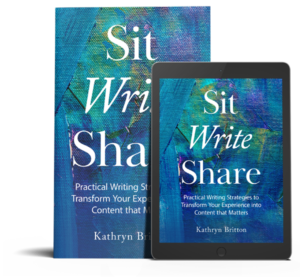Let’s say that you’ve finished a first draft. You put it aside for a day or two, and now you are ready to edit. Start with strategic editing, reading for the entire effect of the piece. One way to do this is to read the entire piece from beginning to end without making any changes at all. Try to read it as if you were a member of the intended audience. How well does it work?
Why Read without Changing Anything?
Different kinds of editing take different kinds of thinking.
Many years ago, a director in my organization taught me not to mix strategic and tactical agenda items in the same meeting. Strategic items require holistic big-picture thinking as people discuss, analyze, and brainstorm answers to critical long-term questions. Tactical items require nuts-and-bolts detailed thinking to resolve immediate implementation issues. Even for a person who is good at both types of thinking, it’s hard to shift between them rapidly. It’s much better to address them separately so that people can be prepared for the kind of thinking required.
As I describe in Sit Write Share, editing happens in phases. The first phases address content and organization. They require the holistic big-picture thinking. The final phases address paragraph structure, sentence structure, wording, and punctuation. They require nuts-and-bolts detailed thinking. The wisdom of separating strategic and tactical items makes just as much sense for editing as it does for planning meetings.
One of the easiest ways to edit strategically is to start editing by reading without changing anything. The discipline of strategic editing causes you to stand back and gather a sense of the piece as a whole.
I confess that I personally find this hard to do. The tactical part of my brain is eager to get small bursts of pleasure out of fixing small errors. I just have to remind that part of my brain that it will get its chance later.
Strategic Editing
Below I’ve included some of the questions you might consider as you read. These are questions that I use for the creative nonfiction that I write. I also use them when I’m editing someone else’s book or article. Questions appropriate for fiction are similar, but of course somewhat different. You don’t have to worry about suspense and spoilers in nonfiction.
For more questions for strategic editing, check out Write Experiment 18 and Write Experiment 20 in Sit Write Share. I am linking here to resources I’ve collected to support these two experiments. The experiments themselves are in the book.
What is the Experience of Reading the Piece Like?
- Does the piece engage you from the start? If you were someone else, would you read past the first paragraph/chapter?
- Are you able to create a mental picture as you go of the main points and how they fit together?
- How far do you have to go before knowing what the piece is about? Many people want to start a book or article with a dramatic story. That can work, but only if the story is very short or clearly demonstrates why you are telling it. For an email or persuasive memo, would you know right away why it is addressed to you?
- Being honest with yourself, do you find places where you want to skip over material that seems to drag?
- How about the ending? Do you feel the way you want your readers to feel when they finish reading your piece? Satisfied? Informed? Inspired? Driven to change something?
Does the Order and Organization Work?
- Is the piece an appropriate length? If too long, what doesn’t entirely belong or could be kept for a sequel? Is there repetition that you could remove? If too short, what could be added to augment what’s already there?
- Were there adequate signposts to help you navigate the thinking in the piece? Signposts in an article can be headers, strong topic sentences, or summaries at the beginning or end of each major area. Signposts in a book include part and chapter titles and end of chapter summaries.
- Does the order make sense? Do you ever find yourself needing to know something that is defined later?
- Do the units seem evenly balanced and appropriately separated from each other? If you have very short and/or very long chapters, will your readers understand why?
- In long pieces especially books, are there reminders of important topics that may have been explained chapters ago? Particularly new ideas, I sometimes need to flip back and review. Backward references can help, as can brief recaps.
Is the Content Clear and Compelling?
- Is there a reasonable balance between stories and concepts? Both contribute to understanding. Stories make ideas come alive. Concepts are the generalizations that people can apply elsewhere.
- Do you have a tendency to use jargon that people outside your field won’t know? Do they really need to know your professional vocabulary, or could you explain your point in more everyday language.
- Does it ever get dry or boring, maybe because you go deeper into a topic than anyone else in the universe cares about?
How Do You Edit Without Changing Anything?
Clearly you’re going to want to capture some thoughts as you go, so completely hands-free probably isn’t possible unless you dictate notes to Siri. Perhaps have a pad and pencil to take notes. Remember to include page numbers so you can find your way back easily. You could also insert comments into the file. Just don’t change the text itself, even if you find major spelling or grammatical errors. Try to look past them as if they aren’t there.
Summary
The first step in editing is to make sure your piece, whether an email, an article, or a book, works as a whole. Only then get into the details of fixing your prose.

